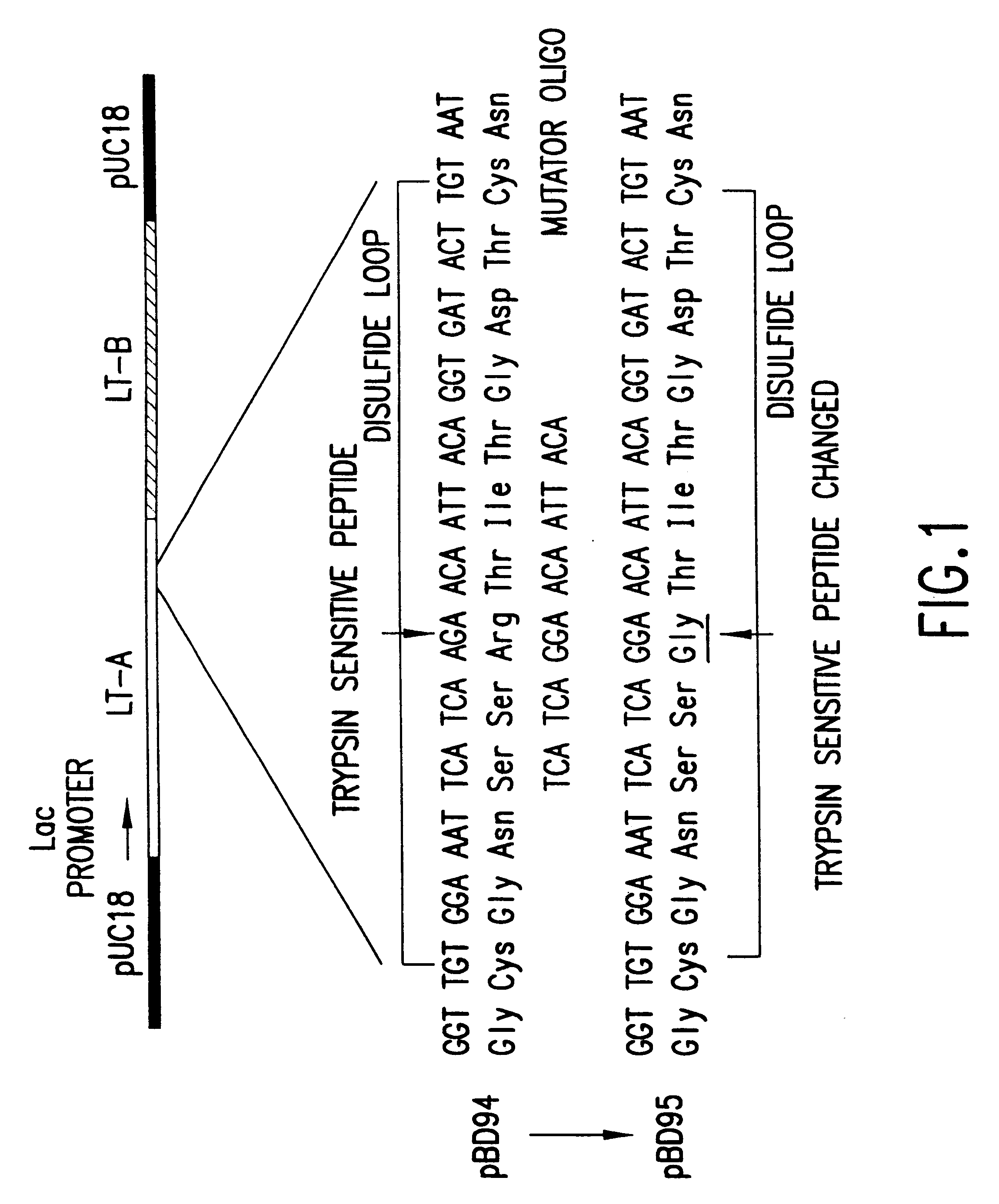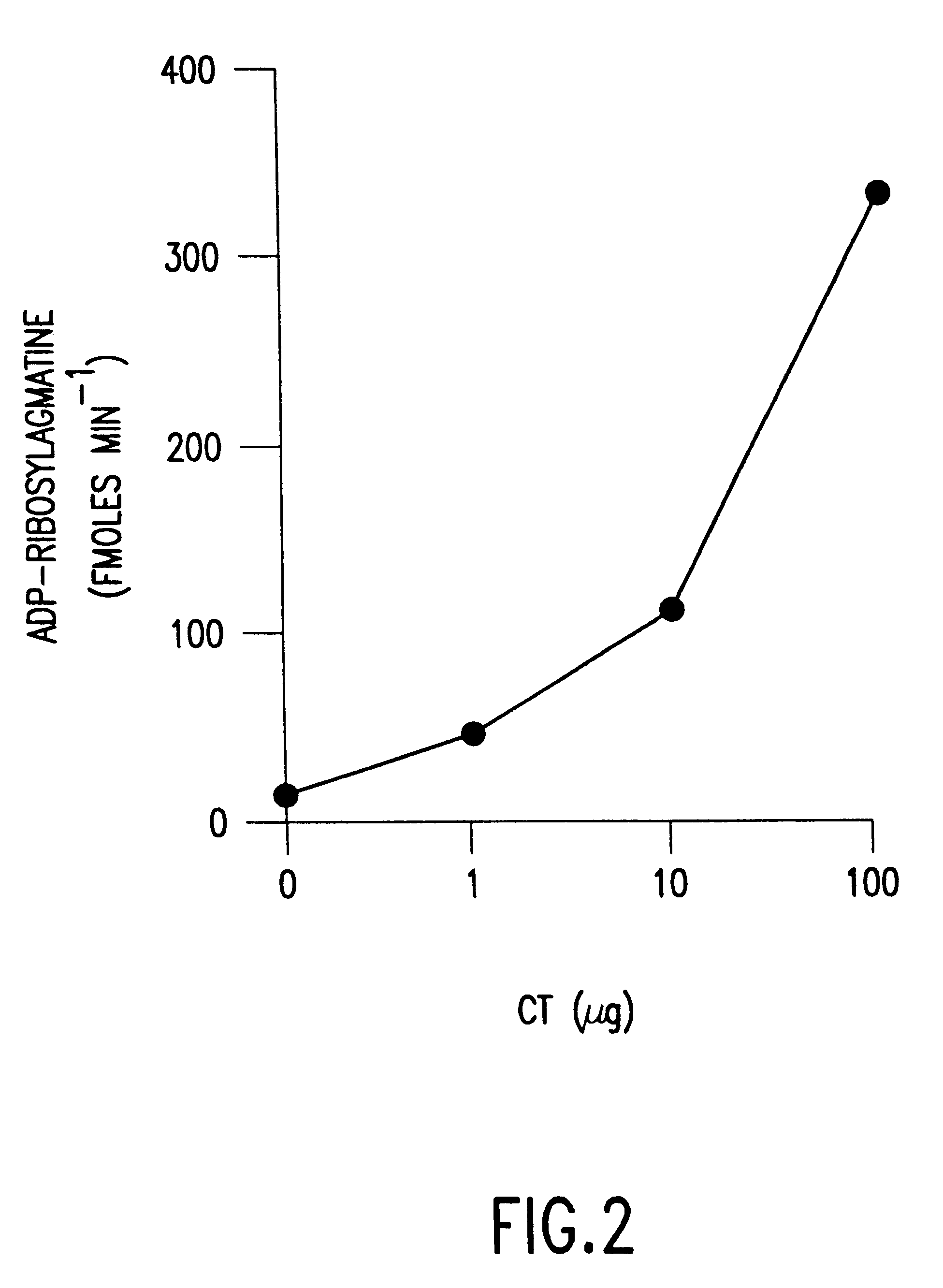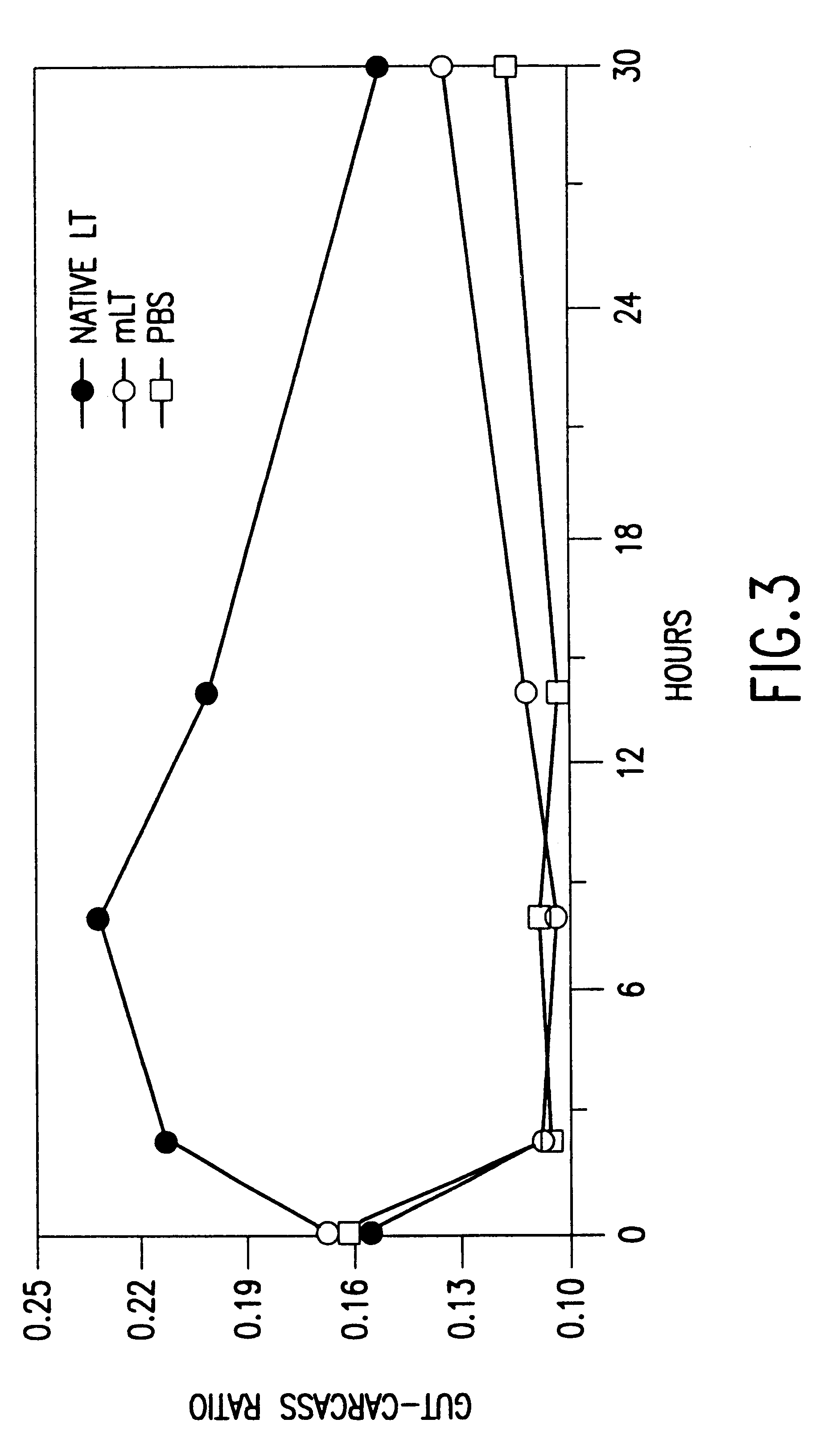Mutant enterotoxin effective as a non-toxic adjuvant
a non-toxic, enterotoxin technology, applied in the direction of antibody medical ingredients, peptide/protein ingredients, peptide sources, etc., can solve the problem of potential to be fully toxic, achieve the effect of enhancing the immune response of animals, reducing toxicity, and devoid of in vitro adp-ribosyltransferase activity
- Summary
- Abstract
- Description
- Claims
- Application Information
AI Technical Summary
Benefits of technology
Problems solved by technology
Method used
Image
Examples
example 1
6. EXAMPLE 1
Characterization of mLT Activities
6.1. Construction of mLT
The wild-type LT toxin is encoded on a naturally occurring plasmid found in strains of enterotoxigenic E. coli capable of producing this toxin. The present inventors had previously cloned the LT gene from a human isolate of E. coli designated H10407. This subclone consists of a 5.2 kb DNA fragment from the enterotoxin plasmid of H10407 inserted into the PstI site of plasmid pBR322 [Clements et al., 1983, Infect. Immun. 40:653]. This recombinant plasmid, designated pDF82, has been extensively characterized and expresses LT under control of the native LT promoter. The next step in this process was to place the LT gene under the control of a strong promoter, in this case the lac promoter on plasmid pUC18. This was accomplished by isolating the genes for LT-A and LT-B separately and recombining them in a cassette in the vector plasmid. This was an important step because it permitted purification of reasonable quantiti...
example 2
7. EXAMPLE 2
Immunization Using HIV-1 Components as Immunogens and mLT as Adjuvant
7.1. Immunization with HIV-1 Viral Lysate
A commercially available HIV-1 viral lysate preparation was used an as immunogen in this study (Advanced Biotechnologies, Inc., Columbia Md.). The HIV-1 viral lysate preparation was derived from tissue culture sucrose density purified HIV-1 IIIB inactivated with Triton X-100 and heat. Analysis of this material indicated the presence of the following structural proteins when reacted with HIV-1 positive human sera: p17, p24, p31, gp41, p51, p55, p66, gp120 and gp160.
Two groups of BALB / c mice were immunized i.n. with 10 .mu.g HIV-1 viral lysate with or without mLT (LT(R192G)). Animals were immunized four times without a parenteral boost and humoral anti-HIV responses were analyzed. Individual serum, nasal and vaginal samples were examined by ELISA for antibodies directed against the viral lysate. Serum samples were diluted 1:8 and vaginal and nasal washes were dilut...
PUM
| Property | Measurement | Unit |
|---|---|---|
| Mass | aaaaa | aaaaa |
| Time | aaaaa | aaaaa |
| Immunogenicity | aaaaa | aaaaa |
Abstract
Description
Claims
Application Information
 Login to View More
Login to View More - R&D
- Intellectual Property
- Life Sciences
- Materials
- Tech Scout
- Unparalleled Data Quality
- Higher Quality Content
- 60% Fewer Hallucinations
Browse by: Latest US Patents, China's latest patents, Technical Efficacy Thesaurus, Application Domain, Technology Topic, Popular Technical Reports.
© 2025 PatSnap. All rights reserved.Legal|Privacy policy|Modern Slavery Act Transparency Statement|Sitemap|About US| Contact US: help@patsnap.com



